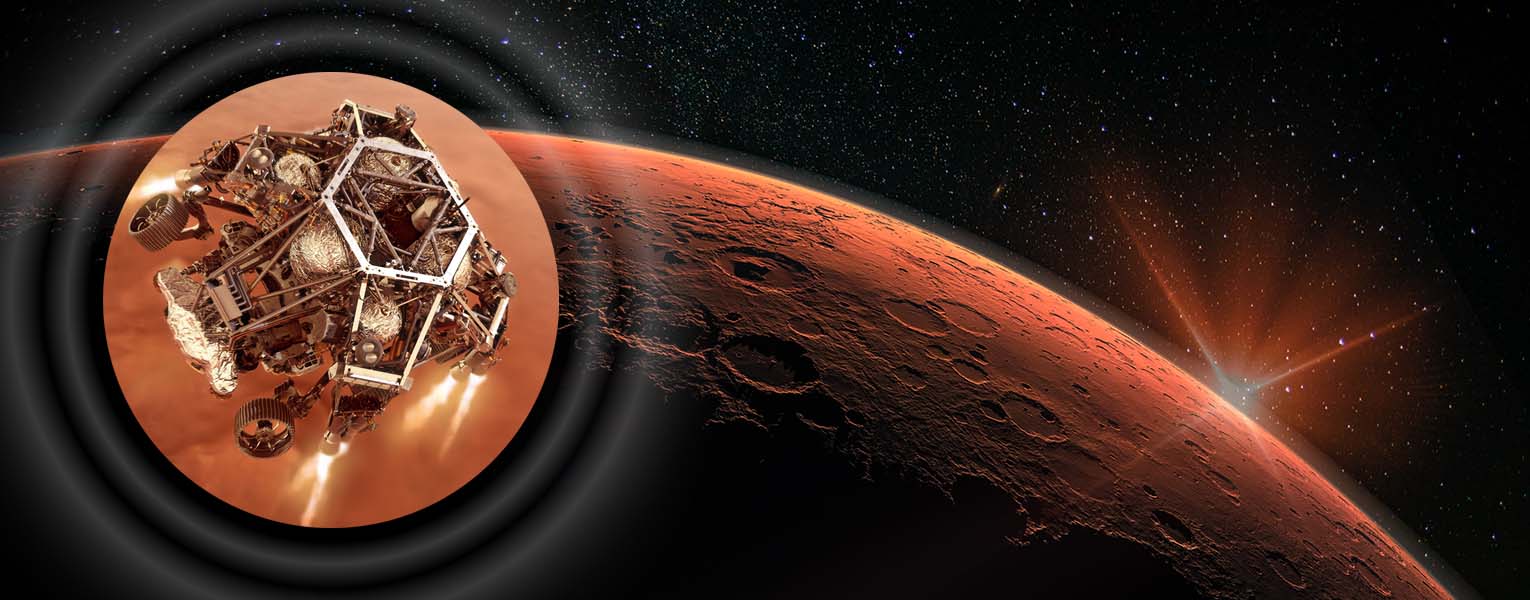12/24/2022
Ensuring ‘Microbe-Free’ Mars Samples
The Mars 2020 Perseverance Rover is collecting samples in search of signs of ancient microbial life, which would advance NASA’s quest to explore the past habitability of Mars. Before the samples collected by the rover return to Earth — no earlier than 2031— FAU’s Gregg Fields, Ph.D., is helping NASA design protocols for sterilizing Mars material and protecting the biosphere. He is working in collaboration with a team of scientists to ensure a “microbe-free” return of Mars samples in a vessel with multiple layers of protection.
“I don’t think that there are any dangerous microorganisms and proteins on Mars, but we still have to prepare and protect against it,” said Fields, executive director of FAU’s Institute for Human Health and Disease Intervention, and professor in the Department of Chemistry and Biochemistry, Charles E. Schmidt College of Science.
The car-sized rover landed in the Jerezo Crater, a 28-mile-wide basin located in the planet’s northern hemisphere. Experts believe that around 3.5 billion years ago, a river flowed into a body of water about the size of Lake Tahoe, which straddles the border of California and Nevada. This is one of the best places to search for signs of microbial life, as the ancient river could have collected and preserved organic molecules, according to NASA.
While the rover explores, it will collect samples of rocky material — up to 30 of which may be returned. The M2020 rover is equipped with seven instruments, 25 cameras — the most ever in deep-space exploration — and even a helicopter the size of a tissue box to take aerial images.
By containing the samples obtained by the rover within an ultra-clean environment when it returns to Earth, scientists will know that any potential discovery of evidence of life did, in fact, originate on the red planet. Before the rover went to space, NASA and its engineers worked hard cleaning the spacecraft to prevent Earth’s microbes from contaminating Mars. Now, the plan is to ensure that when the samples return to Earth, material from the Mars Rover is either fully contained or sterilized, just to be safe.
Fields joined the NASA Jet Propulsion Laboratory based out of California, Nelson Laboratories headquartered in Utah, and Johnson & Johnson based in New Jersey in June 2021 to work on this project. The research group has been addressing heat-resistant bacteria and individual proteins that can act as infectious agents on Earth. Fields is providing complementary technologies from his laboratory to assess degradation of protein-based targets.
“Most proteins are obviously very helpful in our bodies. However, there are very specific proteins that have been noted to behave in a pathological fashion that contribute to disease, for example, Alzheimer’s and Parkinson’s diseases,” Fields said.
The overarching plan would be to inactivate or encapsulate any potentially hazardous bioactive particles by heating and sealing the sample tubes inside a multilayered vessel that will return to Earth. However, the ideal temperature and duration to get the job done is still being determined. To figure this out, the partner laboratories send Fields heat-treated samples of a common protein called bovine serum albumin, as well as model prion protein. The team is targeting near-total disassembly of the protein — more than enough to render it inactive.
So far, Fields has tested the protein treated at 350- and 400-degrees Celsius (662- and 752-degrees Fahrenheit). Because the samples will not return to Earth earlier than 2031, he has time to continue experimenting in his laboratory.
If you would like more information, please contact us at dorcommunications@fau.edu.

